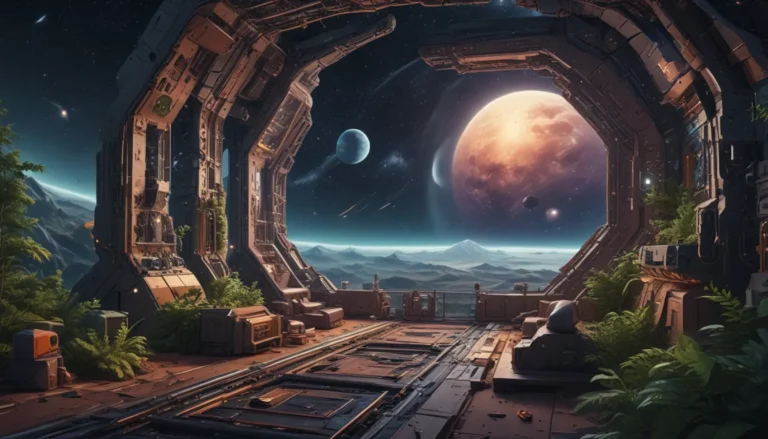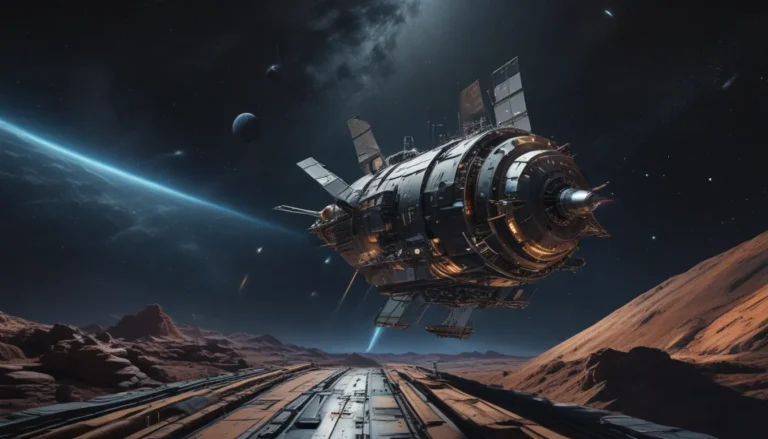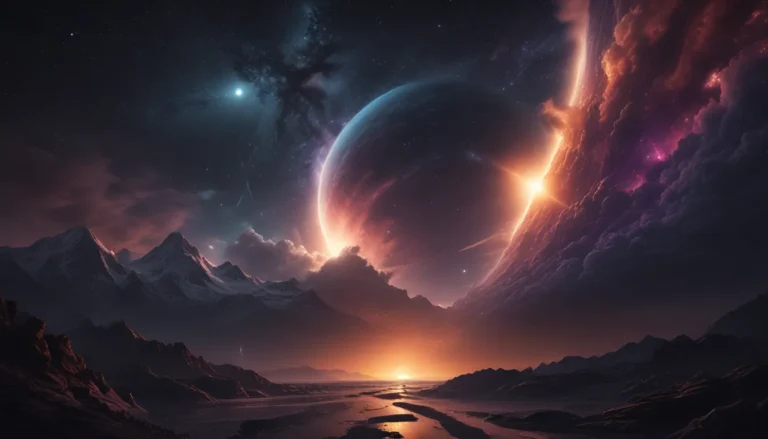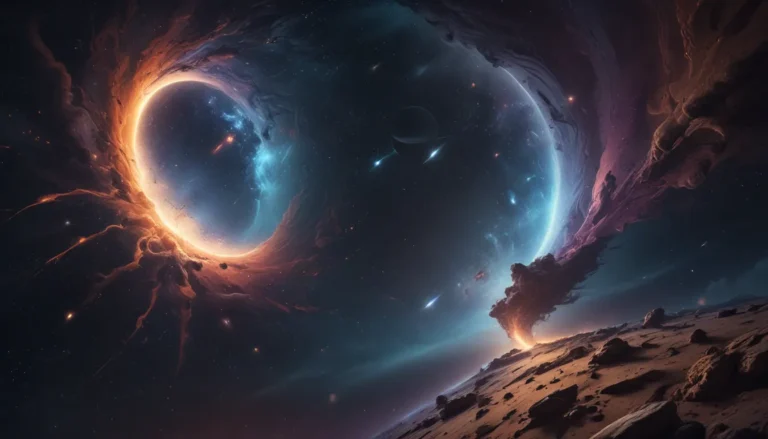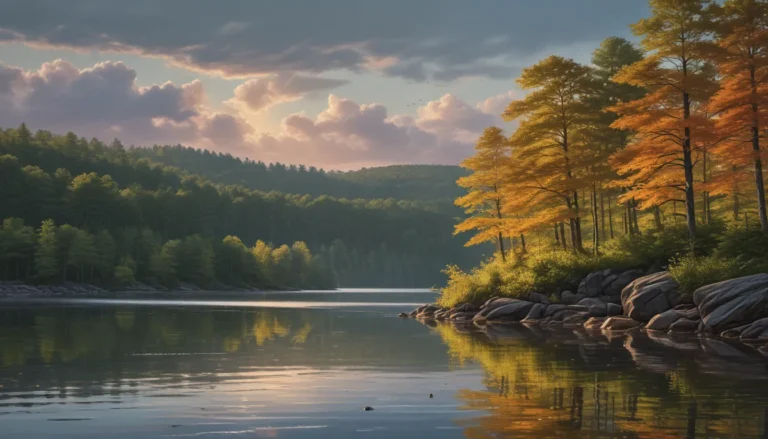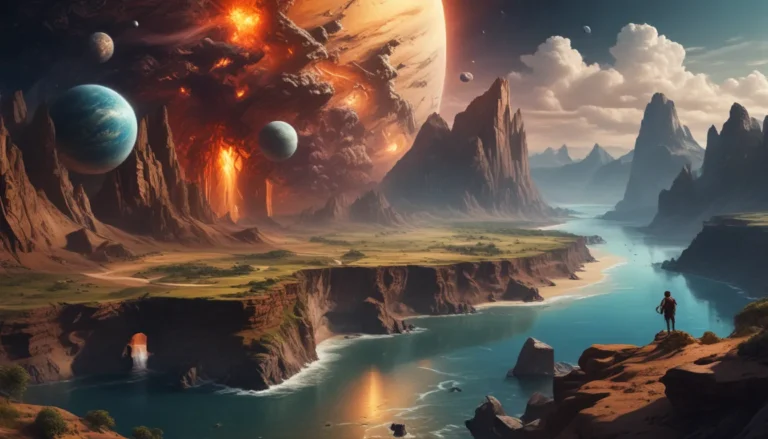The pictures we use in our articles might not show exactly what the words say. We choose these pictures to make you interested in reading more. The pictures work together with the words but don’t take their place. The words still tell you the important facts.
Are you curious about the captivating process of star formation that occurs in the vastness of space? From the birth of massive stars to the creation of entire galaxies, star formation is a mesmerizing journey filled with mind-blowing facts that expand our understanding of the universe. In this article, we will delve into 17 incredible facts about the intricate mechanisms, colossal time spans, and incredible forces at play during the formation of stars. Whether you're an astronomy enthusiast or simply intrigued by the wonders of the cosmos, these mind-boggling facts are sure to leave you in awe of the sheer magnificence of the universe.
Unveiling the Mysteries of Star Formation
Stars are born from massive clouds of gas and dust.
In the vastness of space, stars emerge from the collapse and compression of dense molecular clouds composed of gas and dust particles. These clouds, spanning several light-years, provide the essential ingredients for the birth of stars.
Gravity plays a crucial role in star formation.
As molecular clouds contract under their own gravity, the material within them heats up and spins faster, giving rise to protostellar disks, which are disk-like structures.
Protostellar disks give rise to planetary systems.
Within these disks, gas and dust particles clump together to form planetesimals, which eventually collide and merge to create planets and other celestial bodies in a newly formed planetary system.
The temperature inside a collapsing cloud increases as it gets smaller.
As a cloud collapses, the compression raises its density, leading to a rise in temperature. This temperature increase is vital for initiating nuclear fusion, the process that powers a star.
The birth of a star marks the ignition of nuclear fusion.
When conditions at the collapsing cloud's center reach a critical point, nuclear fusion commences. Hydrogen atoms fuse to form helium, releasing a vast amount of energy in the process.
Stellar Nurseries and Cosmic Creations
The most common type of star formation occurs in stellar nurseries.
These regions within galaxies are where a multitude of stars form, typically found in dense clouds of gas and dust, providing ideal conditions for star formation.
Stars can form individually or in clusters.
While some stars are born alone, many others form in clusters containing hundreds or even thousands of stars, varying in size and shape from compact globular clusters to sprawling open clusters.
Star formation can take millions of years to complete.
The slow, gradual process of star formation spans millions of years, highlighting the complexities of the Universe's mechanisms for creating stars.
Massive stars have shorter lifespans than smaller stars.
Massive stars, formed from larger amounts of gas and dust, burn through their fuel faster due to intense energy production, resulting in shorter lifespans compared to smaller stars.
Cosmic Phenomena and Continuous Creation
Supernovae are the explosive deaths of massive stars.
When a massive star exhausts its nuclear fuel, it undergoes a cataclysmic explosion called a supernova, releasing an extraordinary amount of energy and leaving behind a neutron star or a black hole.
Star clusters can host multiple generations of stars.
Some star clusters contain remnants of older, evolved stars, providing materials and conditions for new stars to form, perpetuating a cycle of stellar birth and death.
Star formation can be triggered by supernovae shockwaves.
The explosive death of a massive star can initiate the formation of new stars by triggering the collapse and fragmentation of nearby molecular clouds.
Stars vary in size, temperature, and brightness.
From small, cool red dwarfs to massive, hot blue giants, stars exhibit a diverse range of sizes and characteristics.
Illuminating Insights and Cosmic Conclusions
Star formation is a continuous process in the Universe.
The cosmic landscape is ever-evolving, with star formation unfolding across galaxies and cosmic events, shaping the Universe's dynamic tapestry.
The study of star formation enlightens the origins of the Universe.
By exploring star formation intricacies, scientists gain valuable insights into galaxy formation, dark matter distribution, and the origins of the chemical elements that make up our world.
Star formation influences the formation of planets and life.
The connection between star and planet formation plays a crucial role in the conditions for habitability and the emergence of life beyond our solar system.
The process of star formation is an active area of research.
Despite advancements, many aspects of star formation remain unknown, driving ongoing research to unravel the Universe's mysteries.
Embarking on Cosmic Adventures
Unravel the mysteries of star formation feedback, delve into galactic star formation history, or explore the fascinating role of galactic magnetic fields in stellar nurseries. Each topic offers mind-expanding insights into the intricate workings of our universe. Choose your cosmic adventure and prepare to be amazed by the wonders awaiting your discovery!
Exploring the Universe Together
Our dedication to delivering trustworthy and engaging content ensures that each fact shared is contributed by real users like you, bringing diverse insights and information. With meticulous editorial review, we guarantee the authenticity and accuracy of the facts presented, ensuring a captivating and reliable journey of exploration and learning. Trust in our commitment to quality and authenticity as you venture into the boundless wonders of the cosmos.

